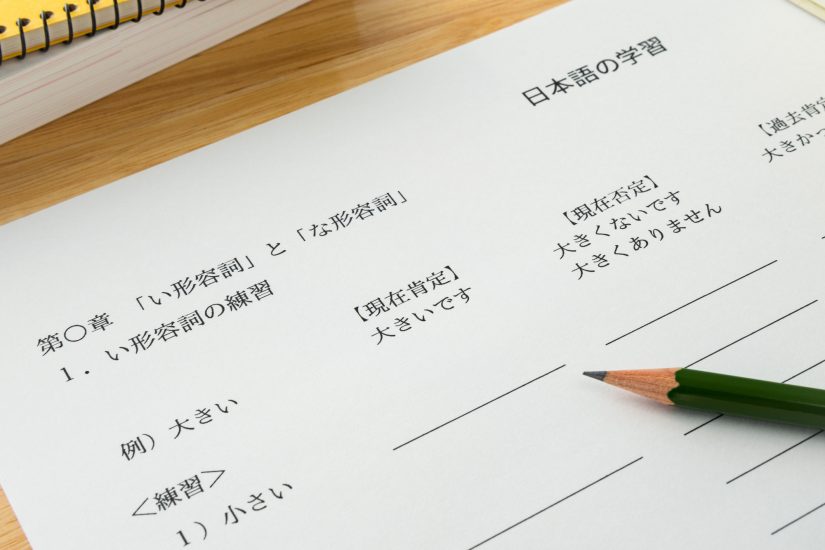The Japanese Language Proficiency Test is the number one benchmark for showing Japanese skill in Japan. Many employers require at least the N2, and others the N1, to even consider hiring non-Japanese natives. However, it’s good to know the ins and outs of this test, and keep an eye out for alternatives, when you’re dealing with language study in Japan.
Background
The JLPT is a standardized test of Japanese language skills run by the Japan Foundation and Japan Educational Exchanges around the world. It has five different levels: N5 being the lowest, and N1 being the highest. The tests measure reading and listening abilities, with a focus on vocabulary and grammar. There is no writing or speaking section.
The JLPT is the de facto standard for Japanese language competency, and is specifically listed in the Japanese government’s “Point Based Preferential Immigration Treatment System for Highly Skilled Foreign Professionals,” and N1 is required for any foreign medical professionals seeking licensing in Japan. Thus, for certain requirements, there is no alternative to the JLPT. That being said, it is important to remember that the JLPT does not measure active skills, meaning that it does not reflect speaking or writing ability. There are some alternatives, though, that offer different advantages and disadvantages. Let’s compare!
JLPT
Official website: https://www.jlpt.jp/e/
The Good
- The JLPT is accepted by everyone as a standard, and so every company that might hire non-native speakers of Japanese will accept it.
- It’s offered all over Japan and the world twice a year, so it’s relatively easy to schedule.
- You can request sign up online or get the forms from bookstores all over Japan.
The Bad
- It’s of limited use outside of N1/N2. Companies and schools essentially never recognize any other levels.
- It doesn’t measure any communication skills, only passive grammar and vocabulary skills.
- Cheating is pretty common. Anecdotally, there are stories all over the internet of people who watched cheating happen during their tests. I myself saw as much. It might not be a disadvantage to you as such, but the indifference I spotted on the part of administrators really soured me on the JLPT experience.
J-CAT
Official website: https://www.j-cat2.org/
The J-CAT, or Japanese Computerized Adaptive Test, is an alternative to the JLPT administrated by a private team and the University of Tsukuba. It’s available online at home, is free to take (for now, the administrators are going to start charging 3,000 yen from June 2020), and offers a score sheet with JLPT equivalents. Some companies might accept this, if you can explain this equivalence.
The Good
- It’s free and available at home, so you can take it whenever you want. It uses anti-cheating design (each question is timed, text is not copiable, etc.) so that the scores are more reliable.
- It’s adaptive, so there’s only one test that reacts to your answers to increase or decrease difficulty. This means it’s generally simpler to take and study for.
The Bad
- Most people (and institutions) are unaware of it, so many companies won’t accept the scores without some persuading.
- Like the JLPT, it doesn’t test communicative ability, only listening, and reading grammar and vocabulary.
J-Test
Official website: http://j-test.jp/ The test of practical Japanese, or J-TEST, is another test like the JLPT aimed at measuring competency in Japanese for those looking to work and study in Japan. It’s held six times a year throughout Japan and East/Southeast Asia.
The Good
- It has a writing section, meaning that communicative ability is more closely checked.
- At 6 sessions, it is held much more often through the year than the JLPT, allowing for very easy scheduling.
- It has many more levels, allowing for more specific level assessment, but only one test. Levels are assigned based on overall score.
- It’s cheaper than the JLPT (3,600 yen, compared to the JLPTs 5,500 registration fee and 500 to buy the forms).
The Bad
- It’s only given in Asia, so those in the rest of the world can’t take it.
- Registration is only available in Japanese, so you will likely need help registering.
- It’s less commonly known than the JLPT so some companies might need explanation before accepting scores.
The BJT
The BJT is short for Business Japanese Proficiency Test. It is a computer based test administered through Pearson’s PearsonVUE test centers, which are found all over the world. It uses listening and reading comprehension skills to measure competence at a more advanced level than the JLPT.
A general comparison is listed here: https://www.kanken.or.jp/bjt/english/about/feature.html
The Good
- It appears to be generally available more frequently than the JLPT, since test centers can schedule freely.
- It is business oriented, so companies are usually happy to recognize BJT scores.
- There is only one test, as opposed to the five of the JLPT, and levels are assigned based on score rather than pass/fail.
- High BJT scores also qualify for points on the government’s point-based visa preference system.
The Bad
- It’s fairly expensive at 6,900 yen.
- It is relatively high level, so beginners will struggle to take it.
- Test centers are located in many countries, but are often only in major cities.
Conclusion
While most people will still require the JLPT, it is good to know that there are some other options out there. With time, these alternatives might even overtake the JLPT as the Japanese government makes more efforts to support Japanese language education and testing in the years to come. Good luck, and happy studying!








